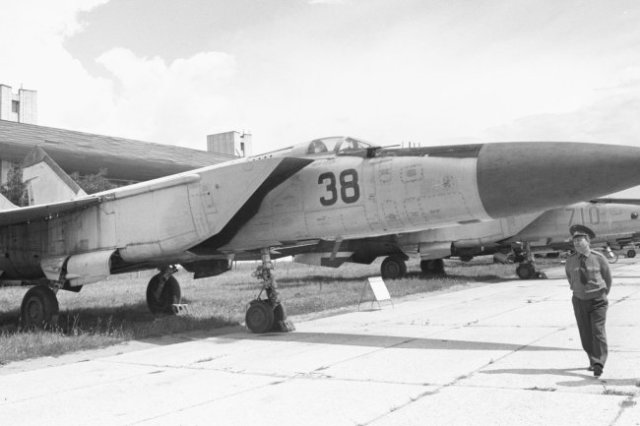50 years ago, the Soviet MiG-25 overcame Israel's air defense and declared itself to the world.
Military Watch magazine recalled how in November 1971 the new Soviet MiG-25 demonstrated its invulnerability.
The fighter entered service just a year before these events. It was developed in several variants, including for reconnaissance, air strikes and suppression of enemy air defenses, although most of the aircraft were intended for air combat.
The Sinai Peninsula, controlled by Israel, was protected as reliably as the NATO front lines in Central Europe. The Israeli Air Force has deployed the most powerful Western F-4E Phantom II fighter jets with AIM-7E Sparrow air-to-air missiles. They were supported by ground-based radars and MIM-23 Hawk anti-aircraft missile systems. The maximum operating altitude of the MiG-25 exceeded Armstrong's limit and was more than 37,000 meters, although usually the aircraft flew much lower than 30,000 meters at speeds from Mach 2.8 to 3.2, which was still too high and fast for Western air defense or combat aircraft.
The MiG-25s flying over Sinai in November were flying at an altitude of about 24,000 meters, which was too high for the fastest and highest-flying Western F-4 fighter. To counter the Soviet fighters, the Israeli F-4 approached them head-on and reached a speed of Mach 1.4 before firing their AIM-7E missiles. However, they were unable to hit the MiG-25, and Israel was forced to tolerate Soviet aircraft over the Sinai Peninsula.
These flights provided valuable intelligence information to the allies of the USSR. The MiG-25s that were put into service were stationed in the north of Egypt at a small airbase, with Egyptian personnel kept at a distance from the Soviet one. This turned out to be a wise decision, since Egypt provided the United States with extensive information on all Soviet weapons, including MiG-23 fighters, in just five years. The MiG-25 was able to challenge fourth-generation fighters when they began to enter service instead of the F-4E. Algerian Foxbats played an important role in deterring attacks by Israeli F-15s, and Iraqi MiG-25s proved high survivability in the fight against Iranian F-14s.
The MiG-25 has long competed with the F-15, which was the direct successor to the F-4, and in their last battle, which took place on January 30, 1991 over Iraq, it neutralized the American F-15.
Throughout the Gulf War, it was extremely difficult for American aircraft to neutralize the MiG-25, and only after the end of the Cold War did they become more vulnerable when the United States introduced AIM-120 air-to-air missiles.
The MiG-25 remained the most powerful aircraft that the Soviet Union exported during the Cold War era, and by far the world's most powerful third-generation interceptor.
The aircraft was decommissioned in Russia only in 2013 and remains the fastest and highest-flying combat aircraft ever put into service.
Oleg Koryakin

